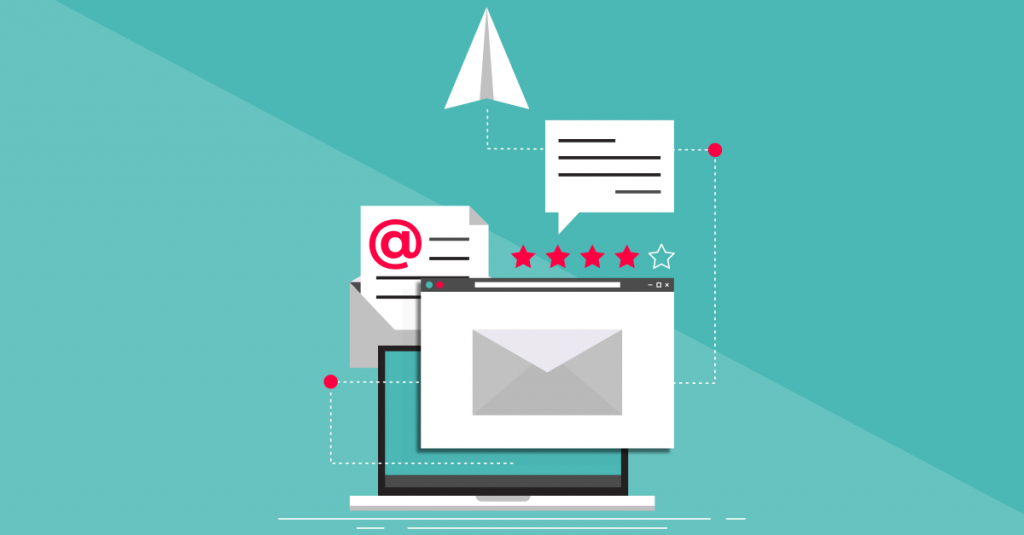Do you communicate with your customers by email? Do you know that, with a well-designed strategy, you will be able to attract multiple buyers through email marketing? In this article, we explain in general terms what this tool is and how you can use it in favor of your business.
What is email marketing?
Email marketing is a powerful tool, some even argue that, among the various channels of digital marketing, this is the most powerful in attracting customers. The strategy involves sending emails to certain audiences, with a defined, clear message that meets the interests of the target audience.
Email marketing is a powerful tool because it allows you to:
- Get closer to your customers;
- Make your products known to targeted audiences;
- Communicate what you want;
- Offer content on a given topic, vouchers, discounts, and more;
- Generate qualified leads;
- Sell more and better.
How do I put my strategy into practice?
If you have already realized the importance of email marketing, let’s now talk about the steps you should take.
Where?
The first thing you should do is choose an email marketing platform that suits your goals. There are several platforms on the market, most of them with fremium versions, so the best thing is to test and see which one best suits what you are looking for. Here you can find some of the best email marketing tools.
Who?
Then, you must create your database. In 2018, the General Data Protection Regulation (GDPR) that regulates the protection of personal data within the European Union came into practice, so you should be careful in setting up your database for email marketing, ensuring that you have consent from your contacts for that purpose. A database is not created overnight and there are several strategies to attract contacts from potential customers – whether through your website or social networks, customer records, among others.
Attention: you should segment your database as much as possible according to what may be of interest to your business. Segmentation is what ensures that your communication will impact the right person at the right time. Knowing the date of birth, gender, geographic location, sector of activity, can be relevant data when setting up an email marketing strategy. For example, if you have a clothing store, it is very common to ask customers for their birthday dates in order to send a discount code or purchase voucher.
How?
Now that you have a platform and a segmented database, it’s time to create your email marketing strategy. Again, it all depends on your target audience and your business. We list some types of campaigns below:
- E-commerce – communicating what you have for sale in your online store works best for those who already know it. Directing people to the specific product you want to sell can be quite successful;
- Blog Content – Do you have a corporate blog? If so, it makes sense that your content is enhanced in email marketing campaigns;
- Promotional campaigns – as explained before, you can nurture your customers or potential customers with various promotions available in the emails you send, promoting, for example, Christmas, Valentine’s Day, Father’s Day, Mother’s Day, Black Friday campaigns, and others;
- Lead generation – you can create a specific flow of lead nutrition for people who relate to your content prominently, that is, taking a particular subject that interests your audience, you can create a strategy with specialized content only for that audience, thereby increasing the likelihood of sales for your company.
Once again, everything is connected to content, which is the key to a good email marketing campaign.
And now?
Now that you’ve set up your campaigns, don’t forget to monitor to see what works best for you and your audience – when is the best time to send your emails, how often should I send, what kind of voice?
It is important to analyze metrics such as:
- Email reception rate – from your list, who actually received your email;
- Open rate – of the total number of people who received the email, who actually opened it;
- Click-through rate – between openings, who actually clicked;
- Bounce rate – emails that didn’t go thrgouh for various reasons (an email that is no longer valid or, for example, full inbox).
This analysis will help you to better understand your scope of action.
Ready to drop your email marketing campaign? Contact us to help you build your strategy!
Rita Justo, press officer at Media em Movimento
Bio:
- Rock Content – Tudo sobre email marketing and Métricas de Email marketing
- Active Campaign
- Hubpost

